Musabaha is a popular Levantine breakfast dish of creamy warm chickpeas with tahini. It’s an affordable, comforting and hearty dish that will start your day off just right. My version is drizzled with a spiced Aleppo pepper oil and toasted pine nuts.
Serve musabaha is with warm homemade pita bread or thick Greek-style pita.

Table of Contents
As with many other Middle Eastern and Levantine recipes, there are several ways to spell this dish based on dialect. The most common way to spell it is musabaha, but I’ve also seen M’sabaha, Msabbaha, Msabaha and Masabacha. Some even call it Hummus Musabaha (as the word hummus translates to chickpeas in Arabic) or Lebanese musabaha.
Musabaha vs Hummus
The most significant distinction between homemade hummus and musabaha is texture. While hummus is characterized by its smooth and thoroughly pureed consistency (which you get by blending in a food processor or blender), musabaha boasts a distinctly chunky texture (which is achieved by simply hand-mashing the chickpeas with a fork). Think of it as a deconstructed hummus.
The chunkiness level is subjective. Some like it extra chunky with whole chickpeas, others prefer it more roughly mashed up. The choice is yours here. Try it a few different ways and decide what works best for you.
Regardless of your preference, the key feature is that the chickpeas in this recipe do not entirely meld with the tahini sauce. I like to think of this dish as a warm combination of chickpeas and tahini sauce.
In fact, its Arabic name, “musabaha,” simply means “swimming.” The idea is for the chickpeas to be immersed in the sauce rather than being fully incorporated into it.

Another key difference is that musabaha is served warm whereas hummus is served at room temperature or even cold. It’s is a breakfast dish after all so it should be warm, soothing and comforting.
Check out my creamy hummus recipe or my caramelized eggplant hummus recipe if you’re looking for a more classic hummus recipe.
Ingredients
This is such an easy-to-make recipe and the ingredients are all standard fridge and pantry staples.

- Chickpeas: I like to use canned chickpeas. They are available everywhere and make this a quick and cheerful recipe. You can also use dry chickpeas but you will have to cook them beforehand, which can be a 2-day process as they require soaking overnight. See the expert tips below for more information about using dry chickpeas. If you are allergic to chickpeas, you can use another legume in this recipe, but it will definitely not be the same nor will it be traditional. Or try my Ful Medames recipe which uses fava.
- Lemon: Lemon juice is quintessential and pairs so perfectly with chickpeas and tahini. The acidity it brings to the table cuts through the rich creaminess of the tahini and creates a perfectly balanced dish. You can substitute it with lime juice or white wine vinegar, but lemon juice is truly the best way to go.
- Garlic: Garlic is an optional ingredient. Not many people like to have it in the early morning (when this dish is traditionally enjoyed). So I leave it up to you to use or not to use garlic in this recipe. If you happen to have roasted garlic, you can use that instead as it will be much milder.
- Tahini: There is no substitution for the flavor of toasted sesame paste. Tahini is important to the Levantine diet and is used in many dishes and recipes. It used to be difficult to find tahini, but these days you will find it in most grocery stores (check the international aisle). Trader Joe’s has their own version. You can of course find it at your local Middle Eastern grocery or online.
- Aleppo pepper: Aleppo pepper has a beautiful floral flavor to it and it’s not too spicy. You can omit the chili or use standard chili flakes or Turkish pepper flakes.
- Pine nuts: these small nuts pack a powerful flavor punch, but I realize that they are not as readily available as other nuts. They also tend to be expensive. As an alternative, you can use slivered almonds. If you do choose to use pine nuts, I recommend using authentic Lebanese or European pine nuts.
- Parsley: Fresh parsley provides this rich dish with a pop of freshness. If you don’t have parsley, you can use cilantro or mint.
See the recipe card for full information on ingredients and quantities.
How to make Musabaha
There are a couple of ways you can make this recipe (canned or dry chickpeas). I personally prefer to use canned, as they are just so much easier to work with. But if you’re feeling up to it, the directions for preparing dry chickpease is below.
Using Canned Chickpeas

1. Boil chickpeas. To a small pot set on medium-high heat, add the canned chickpeas with their water. Boil until the chickpeas soften (Image 1).
2. Dress. Using a slotted spoon, transfer the warmed chickpeas to a bowl. Add the lemon juice, minced garlic (if using), tahini, and a drizzle of olive oil. Stir to combine (Image 2).
3. Mash. Using the back of a fork, mash some of the chickpeas. Add a splash of the cooking water to help loosen up the chickpeas. The final product should be chunky with some whole chickpeas still present (Image 3).
4. Prepare topping. In a small frying pan, add olive oil and pine nuts. Fry on low-medium heat until the pine nuts begin to brown lightly then remove from heat. Add the Aleppo pepper flakes and swirl the pan (Image 4).

5. Garnish. Pour the warm oil and pine nut mixture over the chickpeas. Garnish with fresh parsley and enjoy with pita (Image 5).
Using Dried Chickpeas
If you don’t want to use canned chickpeas, you can prepare them from scratch using dried beans. To cook chickpeas from dry beans, start by rinsing the dried chickpeas thoroughly and then soaking them in water for about 8 hours or overnight.
Drain the soaked chickpeas and transfer them to a large pot. Cover with fresh water, ensuring there’s at least a couple of inches of water above the chickpeas. Bring the water to a boil, then reduce the heat to a simmer and cover the pot. Cook for about 1 to 1.5 hours, or until the chickpeas are tender.
You can add salt during the last 15-20 minutes of cooking. Once done, drain the cooked chickpeas. Reserve some liquid so that you can proceed with this recipe as outlined.
How to Serve this Warm Chickpea Dip
Like many of the other Levantine dips, the best way to serve musabaha is with warm homemade pita bread. But you can also serve it alongside Jerusalem bagels or Taboon (Palestinian Flatbread). Include some sliced vegetables (cucumbers and tomatoes are traditional) and pickles (pickled cucumbers or pickled turnips).
Musabaha can be served as part of a meze or breakfast spread that includes other staples like Zaatar Manakish, Cheese Manakish, Cheese Fatayer or Foul Mdammas (fava beans). Hardboiled or fried eggs are also a standard accompaniment, or try my Cilbir (Turkish eggs) for an extra decadent breakfast spread.
Expert Tips
- Batch it up! If you’re planning to boil dry chickpeas for this recipe, prepare a large batch while you’re at it. Dry chickpeas are much cheaper and give you more bang for your buck. You can store boiled chickpeas in the fridge for up to 5 days (use them to make a range of recipes like hummus or Maftoul). Or you can portion them out and freeze them in freezer bags or deli containers.
- Get Authentic! Serve in a traditional terracotta bowl. You will find those online or in Middle Eastern shops.
- Toasted Pita Chips. If you want to enjoy this dish with a spoon, try adding toasted pita chips on top of your musabaha. It’ll be similar in taste and texture to fettet hummus, another classic Levantine recipe.

Recipe FAQs
Hummus is a smooth dip served at room temperature or cold whereas musabaha is a warm and chunky chickpea-based dish served for breakfast.
Traditionally musabaha is served chunky. The chunkiness level depends entirely on your preferences. It should not be pureed or processed in a machine. It is mashed by hand using a fork.
This creamy dip is best served fresh and warm but you can make it one day ahead of time, store it in the fridge (in an airtight container), and warm it up before serving. Keep in mind that the tahini may seize and become hard and pasty in the fridge so I still recommend making this dish right before you serve it.
I doubt you will have any leftovers, but if you do, they can be stored in a container in the fridge for up to 3 days.
Other Levantine Breakfast Options
If you make Musabaha (Creamy Warm Chickpeas with Tahini) or any other Levantine recipe on Urban Farm and Kitchen, please take a moment to rate the recipe ⭐⭐⭐⭐⭐ and leave a comment below. It’s such a help to others who want to try the recipe.
For more Urban Farm and Kitchen, follow along on Instagram, Facebook, and Pinterest, visit the Urban Farm Shop, or subscribe for new posts via email.
Musabaha (Creamy Warm Chickpeas with Tahini)

Ingredients
For the warm chickpeas
- 1 can Chickpeas – 19oz/540grams
- 2-3 tbsp Lemon juice – 30-45 ml
- 1-2 Garlic cloves – minced (Optional)
- 2 tbsp Tahini – 30ml
- 2 tbsp Extra virgin olive oil – 30ml
- ¼ cup Chickpea cooking water – 60ml
- Salt and kosher salt to taste
Garnish
- 2 tbsp Olive oil – 30ml
- 2 tbsp Pine nuts – 16 grams. You can use slivered almonds instead
- 1-2 tsp Aleppo pepper flakes – 2-3 grams. Use more or less depending on taste
- Fresh chopped parsley
Instructions
- Boil chickpeas. To a small pot set on medium-high heat, add the canned chickpeas with their water. Boil until the chickpeas soften, about 8-10 minutes.
- Dress. Using a slotted spoon, transfer the warmed chickpeas to a serving bowl. Add the lemon juice, minced garlic (if using), tahini, a big pinch of salt, fresh cracked pepper and a drizzle of olive oil. Stir to combine.
- Mash. Using the back of a fork, mash some of the chickpeas. Add a splash of the cooking water to help loosen up the chickpeas. The final product should be chunky with some whole chickpeas still present. Taste and adjust the seasoning.
- Prepare topping. In a small frying pan, add olive oil and pine nuts. Fry on low-medium heat until the pine nuts begin to brown lightly, about 1-2 minutes, then remove from heat. Add the Aleppo pepper flakes and swirl the pan to combine.
- Garnish. Quickly pour the warm oil and pine nut mixture over the chickpeas. Garnish with fresh parsley and enjoy.
Notes
Nutrition
Nutrition information is automatically calculated, so should only be used as an approximation.
 Like this recipe? Rate & comment below!
Like this recipe? Rate & comment below!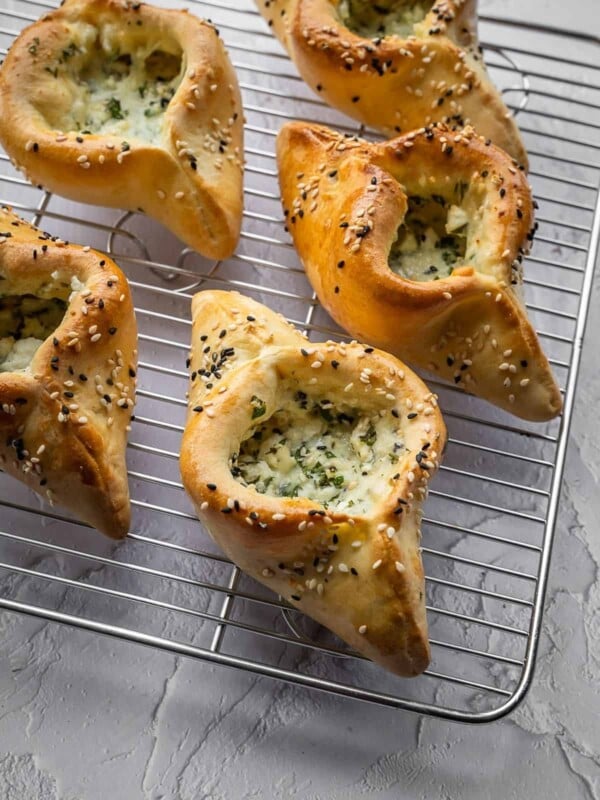
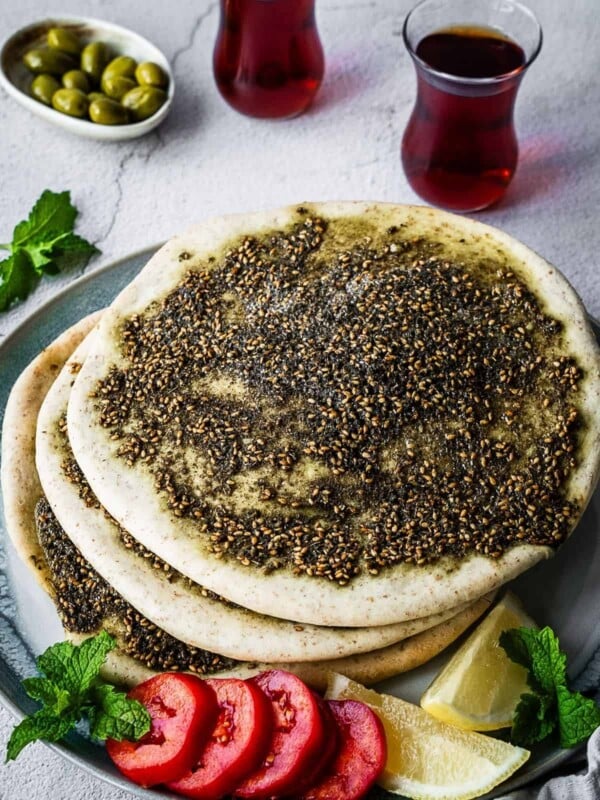
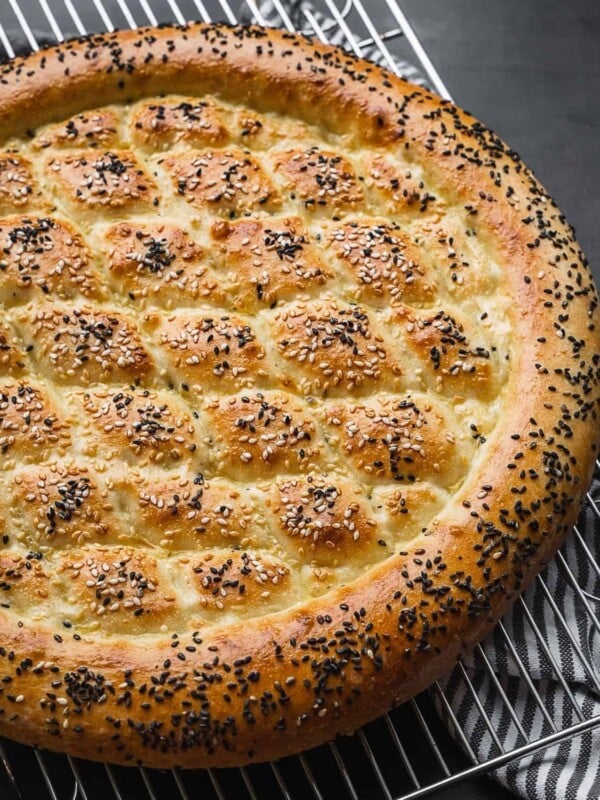
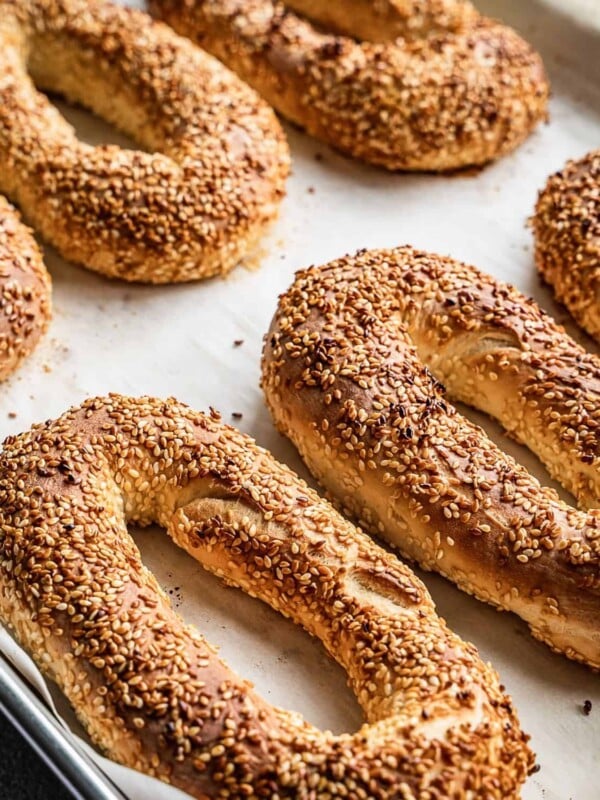
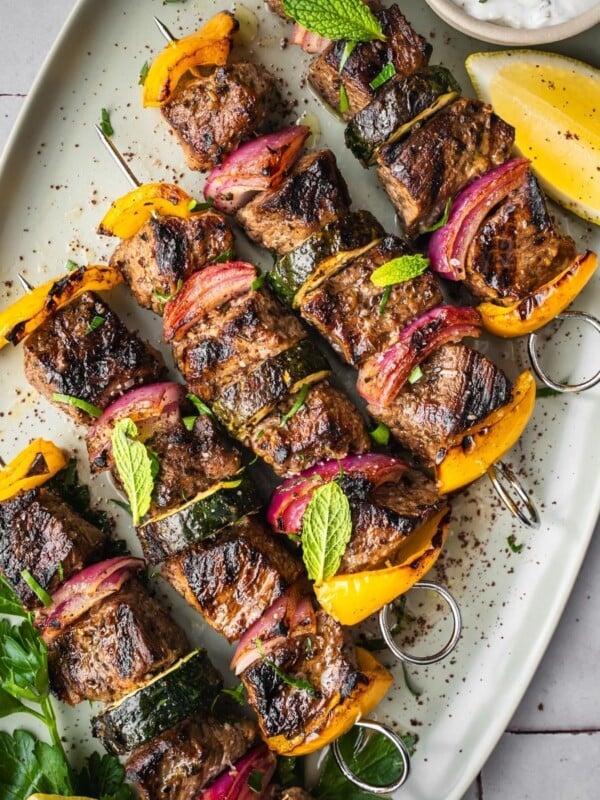

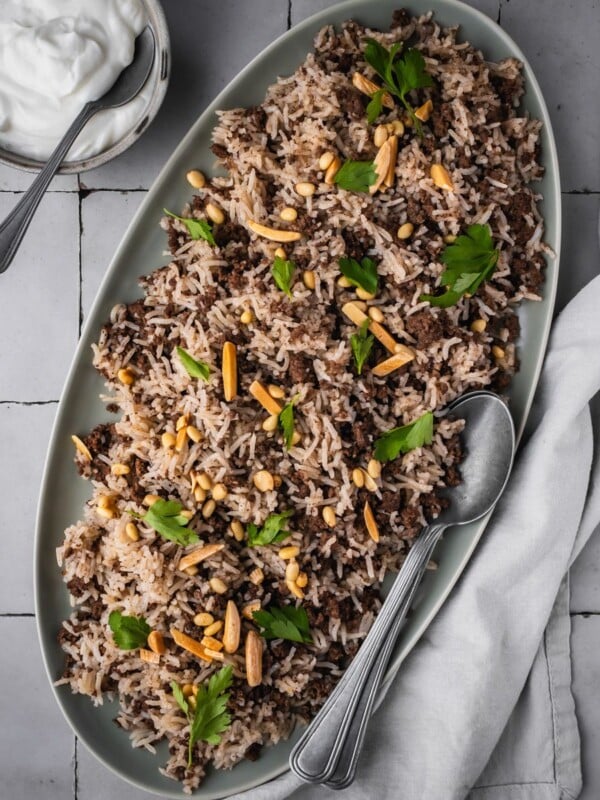









I was looking for something easy to make for a light dinner, using what I had on hand in my cupboards. This recipe was perfect! I didn’t have the pepper flakes or parsley, so I used some sun dried tomatoes from my garden last year, that I stored in olive oil, and fresh chives from this year’s garden. I also had a couple of leftover breakfast sausages that I sliced thinly and warmed with the pine nuts and tomatoes. I made some simple bread rolls to go with it. And it reheats well! We ate the leftovers for dinner this evening. I’ll be making this a lot! Thanks!
Thank you so much for the feedback!